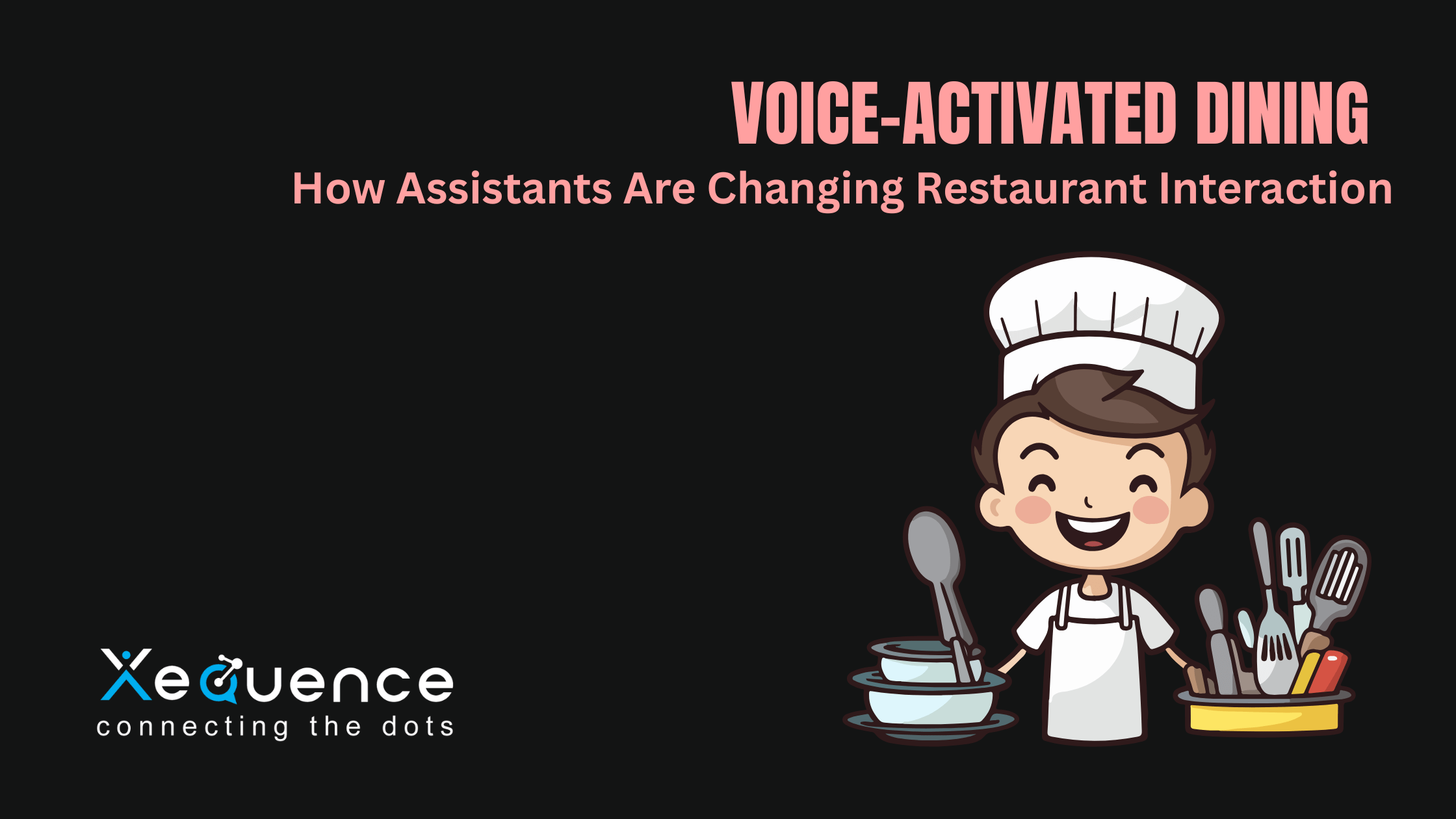- Home
- Digital Concierge
- Voice-Activated Dining: How Assistants Are Changing Restaurant Interaction
Voice-Activated Dining: How Assistants Are Changing Restaurant Interaction
- June 17, 2025
- XequenceAI
- Digital Concierge, Guest Experience, Hotel Management

How Voice-Activated Dining Is Transforming Restaurant Experiences
Voice-activated dining is revolutionizing the restaurant experience by introducing a new level of convenience and efficiency for both customers and businesses. With the rise of AI-powered voice assistants like Alexa, Siri, and Google Assistant, diners can now place orders, make reservations, and request services using simple voice commands. This hands-free interaction enhances accessibility, reduces wait times, and personalizes customer service like never before. For restaurants, it streamlines operations, improves order accuracy, and boosts overall efficiency. As voice technology continues to evolve, it is reshaping how people engage with food establishments—making dining smarter, faster, and more intuitive than ever before.
Hands-Free Ordering
Hands-free ordering in voice-activated dining allows customers to place orders using simple voice commands without touching a menu, screen, or interacting with staff. This technology enhances convenience, especially in busy or contactless environments. It minimizes ordering errors, speeds up the process, and creates a modern, seamless experience. For restaurants, it reduces staff workload while offering personalized, efficient service that appeals to both tech-savvy and health-conscious diners.
Contactless Experience
The contactless experience in voice-activated dining refers to the ability of guests to interact with restaurant services—such as browsing menus, placing orders, or requesting assistance—without any physical contact. Using voice commands, customers can avoid touching menus, kiosks, or even interacting face-to-face with staff. This approach enhances hygiene, particularly in a post-pandemic world, and ensures safety, speed, and convenience. It also aligns with modern expectations for touch-free, tech-driven dining environments that prioritize guest comfort and well-being.
Streamlined Restaurant Operations
Voice-activated dining helps automate routine tasks and simplify workflows using AI assistants. Voice commands can handle orders, table reservations, and customer requests instantly, reducing the need for manual coordination. This leads to faster service, fewer errors, and less staff overload. It also improves order accuracy and allows employees to focus on high-value tasks, enhancing both operational efficiency and the overall dining experience.
Voice Recognition Technology
Voice recognition technology is a key component of voice-activated dining, enabling systems to accurately understand and respond to spoken commands from customers. This technology can identify individual voices, interpret natural language, and process requests such as ordering food, booking tables, or requesting assistance. It enhances convenience by allowing hands-free, intuitive interaction. With ongoing advancements, voice recognition is becoming more accurate, multilingual, and adaptive—offering a more personalized and seamless dining experience.
Multimodal Interactions
Multimodal interactions in voice-activated dining refer to the integration of multiple input methods—such as voice, touch, gesture, and visual displays—to enhance the customer experience. Rather than relying solely on voice commands, guests can interact with digital menus, confirm orders on a screen, or receive visual feedback alongside spoken instructions. This flexibility makes the dining experience more intuitive, accessible, and user-friendly, catering to diverse preferences and improving overall service efficiency.
Personalized Recommendations
Voice-activated dining systems use customer information—including previous orders, dietary restrictions, and browsing habits—to make personalized food and drink recommendations. Voice assistants can quickly suggest options that suit specific preferences, health needs, or even moods. This enhances the dining experience while also boosting sales by promoting relevant menu items, creating a more natural and customer-focused interaction.
Enhanced Customer Service
Voice-activated dining enhances customer service by ensuring quicker, more accurate, and more personalized interactions. Voice assistants can handle tasks like taking orders, answering questions, and providing real-time updates, reducing both wait times and human error. Their 24/7 availability ensures consistent service even during peak hours. This allows restaurant staff to focus on more complex customer needs, resulting in smoother operations and a more satisfying experience for guests.
24/7 Availability
Voice-activated dining offers round-the-clock accessibility, allowing patrons to interact with restaurants at any time of day or night—without the need for staff assistance. Voice assistants are always available to help with placing orders, making reservations, or checking menu details. This continuous availability improves customer convenience, builds trust, and enables restaurants to process transactions even outside regular business hours, increasing potential revenue and customer satisfaction.
Collecting Customer Feedback
Voice assistants simplify and accelerate the process of gathering customer feedback. Using simple voice commands, they can ask diners for their opinions after a meal or service interaction. Restaurants can use this real-time input to identify strengths and areas for improvement. Additionally, reducing the effort required from customers encourages higher response rates and provides more accurate insights—ultimately enhancing service quality and guest satisfaction.
Privacy and Data Security
Privacy and data security are critical in voice-activated dining, as these systems collect and process sensitive customer data such as order history, preferences, and voice recordings. To protect this information, restaurants must use secure platforms that comply with strict data protection regulations. Measures such as encryption and user consent protocols help ensure data is not misused or accessed by unauthorized parties. Prioritizing privacy builds trust and encourages greater engagement with voice technology.
Conclusion
In summary, voice-activated dining is transforming how patrons interact with restaurants by offering a faster, easier, and more personalized experience. From placing orders to customizing meals and processing payments, voice assistants streamline every aspect of dining. They shorten wait times, improve accessibility, and allow staff to focus on delivering high-quality service. As this technology continues to advance and gain adoption, voice-driven solutions will give restaurants a competitive edge in customer satisfaction and operational efficiency. The future of hospitality lies in this seamless integration of human interaction and intelligent technology.
Recent Posts
Redefining the Guest Experience: The Digital Concierge Revolution of 2025
Newsletter
Get regular updates on data science, artificial intelligence, machine
You may also like

The Emergence of AI Concierge: Why All Hotels should have a Chatbot

Redefining the Guest Experience: The Digital Concierge Revolution of 2025

AI Agent Assistants Allow Companies To Scale Without Hiring New Staff




